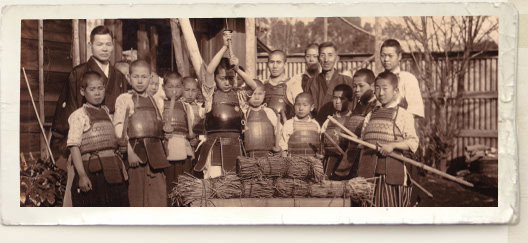
Bokken
The name of bokken (木剣)
is the composition of the words boku (wood) and ken (sword). The bokken
is the wooden equivalent of real swords, for training purposes. Swordsmen
make a good use of it, especially the beginners, but it is also often
used at master level.
In Japan they are traditionally made of red oak (akagi), white oak (siragasi)
or ebony (kokutan). When carrying of swords was banned in the 19th Century
in Japan, many masters changed to train with the wooden variant.
Its length is the same as of the steel version, although its weight is
more, less or identical up to the type of wood and its thickness.

The types of bokken in the Jikishin Kage-ryu style
1. bokken (katana sized), long sword
2. kodachi (wakizashi sized), short sword
3. hojo bokken (original Jikishin Kage-ryu bokken, see
here)
4. suburito, it is mainly for solo practise. It is much heavier
and more difficult to wield so it helps to develop muscles. In certain
(Jikishin Kage-ryu) schools the furibo is also in use which is
a suburi bokken nearly as high as a man and has the weight of 17
kilos.

The suburi (literally "just swinging") is the collection of individually executed cutting exercises. The suburito is harder and heavier than an ordinary bokken and its users have to develop their strength and knowledge of techniques as well.
